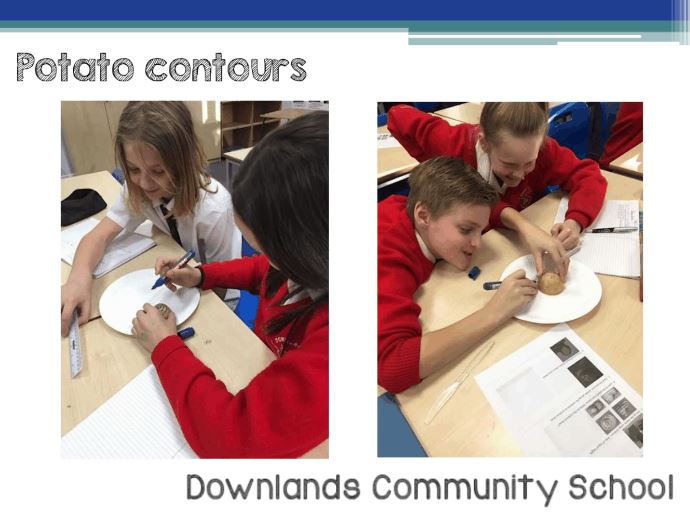<<< GAeConf20 Part 1 (Thursday 16th April)
It’s the end of day two of GAeConf20, and despite being an online engagement from home, I feel just as cream-crackered as if I was running up and down the stairs at the University of Surrey and pottering around the exhibits! So much went on today, and I was only able to be present in one pathway – so this summary will contain a few brief highlights from which you can explore further something takes your fancy.
I spent the day in the ‘Beginning Teacher’ pathway. My presentation was on second, but also I opted for this pathway as I’m still involved in teacher training – so wanted to pick up on a few tips, tricks and new ideas. Then this evening was the TeachMeet – no less brilliant for being online – and it’s something you can watch right now if you missed it (as you’ll read later!).
The GA Quality Marks: Examples of top ideas (Becky Kitchen)
Becky Kitchen started off giving us her top picks she has come across when evaluating submissions for the GA’s Secondary Geography Quality Mark. Here are just some of the ones I liked:

Here’s a good link to the ‘Critical Thinking for Achievement‘ course (that I was privileged to help the GA deliver) using an example from the Caterham School. Take a key question, like “Is drilling in [a particular] location a bad thing?” How would you go about answering that question? But rather than being interested in the answer, but instead get the students attuned to the process – and then talk through with them. Where is that information from? For homework perhaps they could find the source of a particular piece of information or fact? Can they find a more reliable source and update that information?
 This example from the Roedean School was my favourite! When prepping the students to learn about an unfamiliar place – in this case, the continent of Africa, the Geography department gets the students to reflect on themselves and their perceptions first. We formulate our opinions and judgements based on personal biases (see this video by Hans and Ola Rosling), so getting the youngsters to recognise that, engage with it and frame it before learning about a new place can be exceptionally powerful and empathy-building.
This example from the Roedean School was my favourite! When prepping the students to learn about an unfamiliar place – in this case, the continent of Africa, the Geography department gets the students to reflect on themselves and their perceptions first. We formulate our opinions and judgements based on personal biases (see this video by Hans and Ola Rosling), so getting the youngsters to recognise that, engage with it and frame it before learning about a new place can be exceptionally powerful and empathy-building.
And my final favourite…
 Potato contours! (’nuff said)
Potato contours! (’nuff said)
I 100% back up Becky when she says that going for the SGQM is a very good, rigourous way to evaluate, strengthen and develop geography teaching in your department. As head of department at my old school, I worked with colleagues and student leaders to submit a successful bid for the SGQM in 2013 and then the ‘gold standard’ Centre of Excellence award in 2016 (I’m very happy to provide some material you can look at for examples – just get in touch!)
If you’re worried that it may create extra workload for you – here’s a tip from personal experience: approach your SLT and ask for you to do the work for the SGQM as a substitute for the standard paperwork required for your appraisals and department self-assessments etc, just for that year. Any sane SLT will look at what is required for the SGQM and should have no argument against that idea – and will see it as nothing but a benefit to the school and your professional development.
Using GIS to teach climate change issues: a guide for beginning teachers
This was my contribution. But I’m going to park talking about it for now and leave it for a standalone blog entry. However, for now, ponder this question:
More on GIS, climate change, and a brand spanking new GIS tool to teach climate data – developed in consultation with teachers and students – to follow in another post soon!
Building a fieldwork toolkit (Janine Maddison (FSC) & Becky Kitchen)
One of the things I miss about being a teacher is the fieldwork. I absolutely adored it, and would make an excuse to get outside at least once a unit for each year group. That was one of the suggestions by one of the attendees via the chat in Janine’s talk (forgive me as I didn’t note down who that was). I’ve been lucky to have taken a group of students to the USA, and had a policy that student leaders were equal decision-makers in department matters including GCSE fieldwork.
Janine gave a list of what high-quality fieldwork means to her:

The buckets representing allowing the students to devise their own methods of fieldwork – ‘enactive learning’, and the picture (bottom) being the ‘awe and wonder’ factor.
Jenine then posed us a challenge – how would we, as teachers leading a field trip, respond ‘dynamically’ to these:

It required a little thinking out of the box – what if that student wearing trainers couldn’t afford or didn’t have walking boots? What about that student throwing rocks – were they bored? Would they do better being given a physical task to distract them or a role of responsibility like quality control of data collection?
We were presented with some key ideas for outdoor learning:
- Context (e.g. using secondary sources, immersive experiences, drone footage)
- Student-centred (see earlier link to using students as leaders)
- Removing barriers (challenging weather, students out of comfort zone, distractions in the outdoors)
- Enhancing the learning outdoors – you can still use ‘classroom tools’ outdoors (e.g. mini graphs using what you have – see below).

Finally, we were all set some work using Padlet, to devise some fieldwork based in the school grounds. If you haven’t come across Padlet before, it’s a great online collaboration tool for creating, essentially, a digital mind-map or post-it note board.

How to build a Geographer (Gemma Collins – UoB Geography)
I’ll admit from the start here, I can’t give Gemma’s talk enough justice. There was a spout of cabin-fever with the kids here in the Rackley household and the better half had to pop out for an essential trip to the chemist. But I did manage to pick up enough to be massively inspired by Gemma. I’m lucky enough to still be helping out with the odd session for the University of East Anglia’s PGCE Geography course, and I interact with trainee teachers fairly often.
Download Gemma’s ‘Build A Geographer’ resources here:
Not only did I pick up some tips that I will use in future engagements with PGCE students, but also found myself being very introspective. Gemma’s talk was aimed at the ‘beginning teacher’, sure, but gave a lot of things to think about for those of us more experienced and in a state of flux – as I am.
The pathway to ‘becoming a geography teacher’ is more complex than you would think. Actually, my pathway which was a straight shot all the way through is actually not normal, and Gemma’s visualisation below demonstrates that actually, there are a lot of twists and turns along the way. (For me I now find myself with the situation turned on it’s head, where I’ve come out of teaching and into industry).

One of the things Gemma showed us, which was a lovely way of getting her student teachers to think about themselves as geographers and how they may have came to be geographers is the ‘geography in a jar’ activity. Check out this amazing twitter thread:
If we could all package up what geography means to us, what would it look like? How might it represent the journey we’ve been on and who we are as a person? This really struck a chord with me, as one of the biggest pieces of advice I give to student teachers is to be human.
I really wished I could have given more justice to Gemma’s talk. When the recordings are made available, you should certainly mark it as a must-(re)watch!
Thoughts from other talks in other pathways
The setup of GAeConf20 meant I could only be in that one pathway of the day, the others being ‘primary’, ‘GCSE’ and ‘A-Level’. So having a little scan through the hashtag on twitter, here as some interesting things I came across which will make me seek out and watch the recordings when made available.
And of course… the legendary TeachMeet
There was no less of a buzz for this being an online-only version of the TeachMeet – something that always goes down well at these conferences and superbly curated and hosted by David Rogers.
But being online, streamed on YouTube, we had hundreds of viewers and the contributors were able to be a little more quirky with their presentations. So this TeachMeet broke records for viewers and also broke the record for the youngest presenter – who you can watch from about 40 minutes in 😉
I’m so proud of my little boy, and he got a lot a kudos over the YouTube chat and Twitter. But now I’m under pressure for him to make an appearance next year, or there will be a riot!
As always, all the TeachMeet presentations were fantastic, but my favourite was Richard Thompson’s (@MallorcaGeog) who comically used PlayMobil figures for the ‘dos’ and ‘donts’ of conducting fieldwork.
A shout-out to the ‘lobby’ music
Judge for yourself – a touch of class by GA Sales Manager, Mark!
The importance of community in challenging times
I’ll end this entry with a personal admission – these are challenging times and it’s not easy for many people, in various ways and to various degrees, to cope with life being on hold or locked-down. My mental health has taken a bit of a beating – I have risen above such challenges in the past, and one reason why I have is thanks to the communities that I have been a part of.
I may no longer be a teacher myself, at least for now, but I still strongly identify with the geography teacher community. My heart and soul lies in education. And frankly, I really, really needed today. Thank you so much to everyone involved in making this conference happen online – it’s been a saviour to my sanity.
Looking forward to tomorrow 🙂 ttfn
GAeConf20 Part 3 (Saturday 18th April) >>>
All my education work via Geogramblings is done all in my spare time, at my own cost but is free for you to access and enjoy. If you can spare a few pence, I’d be delighted if you could show your thanks by ‘buying me a coffee‘. Thank you! 🙂

4 thoughts on “The #geographyteacher community (GAeConf20 Part 2)”